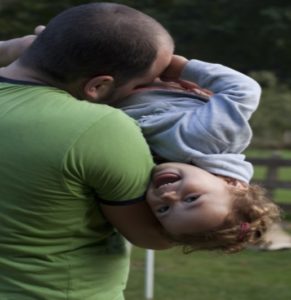From packing all your belongings to adjusting to a new home, there is no doubt that moving comes with many challenges—and it can undoubtedly come with a few extra hurdles if you have a child with autism. After all, moving threatens to shake up your daily routine, introduces unfamiliar experiences, and presents new surroundings, all of which kids on the spectrum commonly have difficulties coping with. However, while these changes are inevitable, you can make the transition easier using these tips. Moving isn’t something to fear if you have an autistic child, but you do have to plan ahead and be prepared.
Let Them Help
“Children don’t like to be excluded. And it is no different for moving,” says Nancy Zafrani from Oz Moving. “One way we’ve seen parents getting their kids involved is by assigning them moving day jobs.”
This advice applies to children of all ages and abilities. But for the best results, try to give them a job that falls in line with their skill set and, if possible, their interests. This may be as simple as helping with packing, sweeping out empty rooms, or creating picture labels for each box. To create picture labels:
- Get a sheet of large stickers, like the ones used for nametags.
- Ask your child to draw one or two items from each box on the labels.
- Once done, slap the sticker on the corresponding box beside the written label.
Or, if your child has a particular interest like space, mermaids, etc. let them decorate the boxes with those pictures. The idea here is to make them feel involved, which in turn, can make them think they have more control over the situation and help ease their anxiety. Just remember not to force it. If they are disinterested in helping, that is also perfectly fine.

Start Discussing Changes Early
It is essential to explain what is happening early on to ensure the move doesn’t feel jarring. Verbal communication is always encouraged, but try throwing in a few visuals for maximum understanding. This tip can be applied to any child to assist in eliminating the fear of the unknown, but it is especially helpful for non-verbal kids who thrive on visual communication. A few ideas include:
A Schedule: You may want to create a calendar of when everything will be happening. If your child doesn’t read, symbols such as boxes to denote packing and a truck to show moving day can help.
Show & Tell: Show them pictures of their new home, school, and neighborhood. Consider using the photos of your new home from the online real estate listing or Street View on Google Maps.
Picture Books: Reading them picture books about moving can help them further understand the process and what will be happening in the coming weeks. These can be particularly helpful if your child has never moved before.
Also Discuss the Similarities
Moving does mean a lot of change, but it is important to let your child know that not everything will be different. All of their stuff, their family, and their pets will be coming with them. It can also be a good idea to assure them that they will still be able to see their friends. If it is a long-distance move, then tell them they can talk on the phone, write letters, or even have video calls to chat face-to-face.
Highlight the Positives
There is no doubt that moving is stressful and requires a lot of work, but any time you are talking to your child about the move, paint it in a positive light. Get them excited by discussing the park in their new neighborhood or the fact that their new house will have room for a big garden to grow flowers and vegetables.
Stick to Routine
It can be difficult to stick to your daily routine when you throw moving tasks into the mix. But the better your child’s routine stays on track, the better. Predictability and repetition are huge comfort factors to many autistic kids, so try to adhere to the same mealtimes, bedtimes, and other daily activities throughout your move—especially once you’ve moved into your new home.
Find a Babysitter
If you can get someone to watch your child on moving day outside of your home, even for a few hours, this can be a big help. This can not only help prevent sensory overload, but it ensures that stacks of boxes and open doors don’t become risks for climbers and runners. If possible, find somewhere for your child to stay overnight, like at a grandparent’s home. This gives you more time to get stuff done and allows you to unpack their room before they arrive. Seeing all of their stuff set up in their new home, as opposed to an empty room, can be comforting and, overall, make the transition easier.
Can’t get a babysitter? Take a bit of time to take them out of the house on moving day to escape the chaos. Go for a walk, play in the park, or deliver handmade goodbye cards or treats to neighbors.
Get Noise-Canceling Headphones
If your child has sensory anxiety around noise and you can’t get them out of the house on moving day, consider noise-canceling headphones. These can help muffle the sounds of boxes shuffling about, tape guns screeching, and all the other unfamiliar sounds that are associated with moving day. Alternatively, if you have been working on coping mechanisms to deal with noise, warn them before the noises start so they can mentally prepare and know it is time to use their coping strategies.
Label Their Boxes Clearly
The last thing you want is to get to your new home only to find that the stuffed animal they want is nowhere in sight. Labeling boxes with not only which room they belong, but also their contents can be a big help in preventing meltdowns over lost items. If your child has a specific comfort item like a blanket, or toy, don’t let the movers take off with it—pack it in your own vehicle. That way, there is minimal risk of it getting lost.
Many steps to help your autistic child cope with moving aren’t overly time-consuming or difficult, but they do take some planning. So, start planning your move early to get on top of things and above all else, remember to have patience. Moving comes with challenges, but with your help, your child will make it through.



